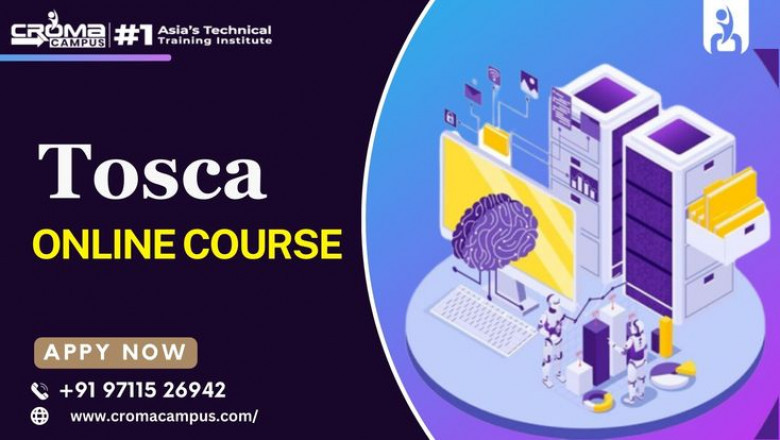views
In the world of software automation, it is necessary to reliably and accurately build the user interface elements. Tricentis Tosca is one of the leading model-based automation platforms that offers a sophisticated and strong mechanism for object identification. It is necessary to understand how Tosca identifies objects to build stable, maintainable, and efficient automation scripts.
Here in this article, we will discuss in detail about identifying objects in Tosca. So if you are looking to grow your career as a Tosca developer, then consider enrolling in the Tosca Online Training. This training is essential to understand its principles, various identification methods, and best practices.
Methods of Object Identification in Tosca
Here we have discussed some of the best object identification methods in detail. So if you have gained Tosca Certification, then you will be able to implement these methods into practice.
Unique Identification
This is the strongest method. Tosca uses a combination of properties that can uniquely identify an object in the current context. It automatically chooses the properties that are most likely to stay the same and be unique.
Index-Based Identification
Sometimes there are multiple identical objects (like rows in a table without unique IDs). In these cases, Tosca can identify the object based on its position (like the third row in the table). However, relying too much on this method can make tests less reliable if the order of the objects changes.
Anchor-Based Identification
If an object doesn’t have a stable or unique identifier, Tosca can find it by looking at a nearby, more stable object (called an anchor). This method works well when objects change or when things are placed close together. You can set an anchor object and specify where the target object is in relation to it (like “the button to the right of the 'Username' label”).
Image-Based Identification
In situations where technical properties aren’t reliable or available (like in embedded apps or virtual environments), Tosca can recognize objects based on their visual appearance. It does this by taking a snapshot of the object and comparing it to what it sees on the screen. This method is useful, but it can be sensitive to small visual changes.
XPath and CSS Selectors (for Web Applications)
For web applications, Tosca can use XPath and CSS selectors to identify elements. This method is flexible and powerful, allowing Tosca to target elements based on their structure and attributes in the webpage.
Automation IDs and Accessibility Properties
Many modern UI frameworks provide Automation IDs or follow accessibility standards. These include properties like AutomationId, Name, and ControlType, which are stable and should be used for reliable object identification when they’re available.
Best Practices for Reliable Object Identification in Tosca
Here we have discussed some of the best practices to make sure your tests are strong and easy to maintain. Taking Database Testing Training can help a lot in this when it comes to object identification.
Use Unique and Stable Properties
Whenever possible, pick properties like id, name, AutomationId, and stable accessibility attributes to identify objects uniquely.
Avoid Using Index-Based Identification
If there are similar elements, try to find other ways to tell them apart. Use anchor-based identification instead of relying just on the index.
Use Anchor-Based Identification Smartly
Find stable elements that are always on the screen and use them to help locate less stable objects.
Be Careful with Image-Based Identification
Only use image-based identification when other methods won’t work. Make sure the images you capture are clear and not too sensitive to small changes in appearance.
Use XPath and CSS Selectors Carefully
While XPath and CSS selectors are powerful, avoid making them too complex. Try to keep your selectors simple and specific.
Review and Update Identification Strategies Regularly
As the application you're testing changes, go back and check your identification strategies to make sure they still work well.
Use Tosca's Spy Tool
The Tosca Spy tool is helpful for checking the properties of UI elements and testing different ways to identify them.
Work Closely with Developers
Understanding how the UI elements are built and how developers assign identifiers can make your automation more effective.
Conclusion
From the above discussion, it can be said that Mastering object identification in Tosca is an essential skill for anyone working in test automation. By learning Tosca's model-based approach, exploring the different identification methods, and following best practices, you can create strong, reliable, and easy-to-maintain automation scripts. These scripts will help ensure consistent test results. By fully using Tosca's powerful object identification features, you can enhance your test automation and make a big impact on the success of your software development projects. So don’t wait anymore and enroll in the course today to give your career a new height of success in this competitive world














Comments
0 comment